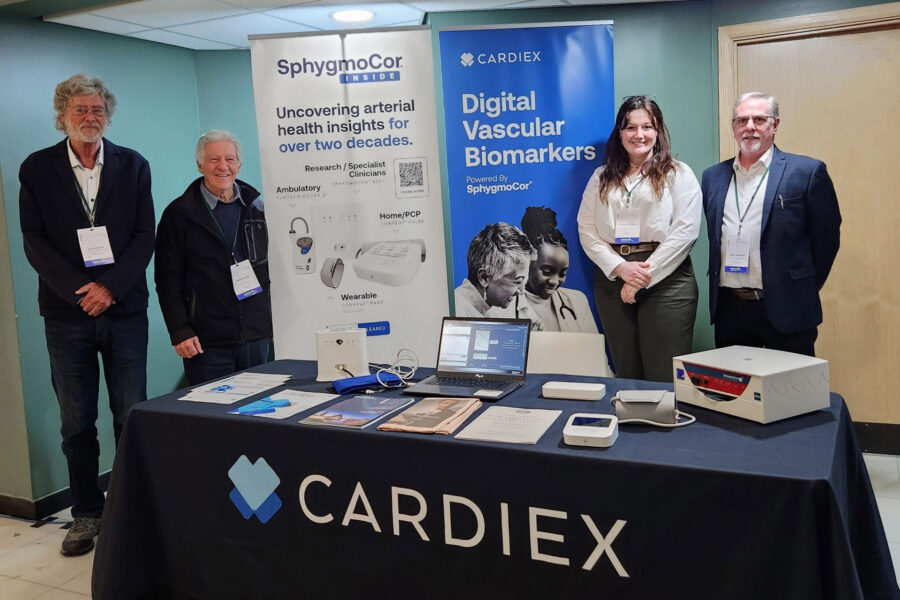
What Your Heart Rate Is Trying to Tell You About Your Health
January 9, 2023
How Cardiovascular Health Impacts Covid Outcomes
March 11, 2023In honor of Heart Health Awareness month, we are casting a spotlight on chronic inflammation, an invisible immune response that can quietly—yet systematically— wreak havoc on your cardiovascular health.
Most people are familiar with the signs of acute inflammation: You burn your hand and your immune system sends in an army of inflammatory cells and cytokines (proteins that stimulate more inflammatory cells) to protect and heal the wound, resulting in redness and swelling. This kind of inflammation is usually easy to spot and very adaptive: it helps us heal and protects our body from outside aggressors.
But inflammation isn’t always visible—or beneficial for our health. In fact, chronic low grade inflammation is one of the most insidious drivers of poor health. “Although chronic inflammation progresses slowly, it is the cause of most chronic diseases and presents a major threat to the health and longevity of individuals,” National Institute of Health researcher Roma Pahwa writes in a recent report.
What Is Chronic Inflammation?
Researchers believe chronic inflammation represents a long-term or recurring immune response to a low grade irritant, such as toxins from cigarette smoke or excess fat cells (especially in the abdominal area). Essentially, your immune system shortcircuits and can’t turn itself off: it continues to fire off inflammatory cells and cytokines even when there is no outside threat.
When a person suffers from rheumatoid arthritis, for example, their immune system attacks joint tissues, creating an inflammatory response that comes and goes, causing serious damage over time. Other signs of chronic inflammation include: abdominal pain, chest pain, fatigue, fever, mouth sores, and rashes (i.e. eczema).
Left unchecked, chronic inflammation can damage healthy cells, tissues and organs and may cause internal tissue death and damage to cell DNA, leading to life-threatening illnesses such as cancer or Type 2 diabetes.
In fact, 50% of all global deaths can be attributed to inflammation-related diseases such as ischemic heart disease, stroke, cancer, diabetes mellitus, chronic kidney disease, non-alcoholic fatty liver disease (NAFLD) and autoimmune and neurodegenerative conditions, according to a 2018 systematic review in the Lancet.
What Causes Chronic Inflammation?
There are an infinite number of triggers for chronic inflammation but a few of the more common ones include: autoimmune disorders such as Lupus, where your body attacks its own healthy tissue; untreated acute inflammation from an infection or an injury; exposure to toxins like pollution, industrial chemicals, mold or lead; chronic stress; obesity (excess weight in the abdominal area is particularly dangerous); low sex hormones (estrogen and testosterone); and drinking in excess and smoking.
Interestingly, while moderate exercise can reduce inflammation, studies show exercising at your maximum capacity too frequently (i.e. running marathons regularly) can have the opposite effect.
“Inflammation damages the blood vessel lining, and repairing that damage can lead to narrowing (or further narrowing) over time,” Director of Hypertension at the University of Pennsylvania School of Medicine, Ray Townsend, M.D., says, noting that inflammation also stiffens arteries, increasing blood pressure over time. Inflammation can also accelerate the progression of atherosclerosis.
Within the arteries, inflammation causes fatty cholesterol rich plaque to build up. Your body sees the plaque as a threat, so it tries to wall off the plaque. But if the wall breaks down, the plaque can break free, forming a clot that blocks blood flow, which can cause a heart attack or stroke.
How to Reduce Inflammation
Studies show lifestyle changes can reduce chronic inflammation—and possibly even reverse — its progression. Here are are seven scientifically-proven ways to do it:
- Lose weight. Adipose tissue (commonly known as body fat) is considered one of the largest endocrine organs in the body. In other words, it is not simply inert tissue used for energy storage, it plays a dynamic role in dozens of physiological and pathological processes in the body, releasing hormones and inflammatory proteins and factors. Some reports have shown a direct correlation between body mass index (BMI) and the quantity of pro-inflammatory cytokines secreted.
- Adopt a Mediterranean diet The typical American diet of meat, cheese and highly refined, processed foods destroys your gut and triggers inflammation throughout the body, according to longevity expert Dan Buettner, author of The Blue Zones Challenge. He recommends sticking to a plant-based, low-sugar, anti-inflammatory diet focused on fresh fruits and vegetables, whole grains, beans, wild fish and plants like soybeans and flax seeds that contain omega-3 fatty acids. A Mediterranean diet is also rich in anti-inflammatory micronutrients like magnesium, vitamin E and selenium that helps neutralize free radicals, unstable oxygen molecules that trigger inflammation. This fiber-rich diet also promotes a healthy gut, which helps regulate the immune system by lowering levels of inflammatory cells and cytokines.
- Get moving! Physical activity, especially high intensity interval training (HIIT), helps reduce dangerous belly fat, a key source of chronic inflammation. In fact, “exercise not only reduces abdominal fat but also induces an anti-inflammatory environment by modifying the release of inflammatory cells and factors in the bloodstream,” Mass General cardiologist and Harvard Medical School Instructor Michael Ocborne, M.D. says. “Exercise may also contribute to beneficial modifications in stress-associated brain regions that contribute to an unhealthy stress response.”
- Invest in a state of the art home blood pressure monitor. With the imminent approval of Conneqt Pulse, the first at home device capable of measuring both central and brachial blood pressure, along with several other digital vascular biomarkers, consumers can be alerted to early warning signs of invisible inflammatory damage. Elevated readings for Pulse pressure and Augmentation Index suggest arterial stiffness, an early warning sign of subclinical cardiovascular disease.
- Stop smoking. Nicotine activates a type of white blood cell called neutrophils, which release molecules that increase inflammation, according to a 2016 report Journal of Leukocyte Biology.
- Cut down or eliminate alcohol. Like cigarette smoke, alcohol is a toxin that can trigger inflammation throughout the body. Alcohol can also disrupt the balance of good bacteria in your gut. This overgrowth increases bacterial waste products including endotoxins, chemicals that promote inflammation.
- Consider Hormone Replacement Therapy (HRT). Sex hormones like testosterone and estrogen can suppress the production of several pro-inflammatory markers. Studies show maintaining optimal sex hormone levels reduces the risk of several inflammatory diseases.
- Reduce stress and improve your sleep habits. Stress releases inflammatory substances into the bloodstream and can make it difficult to get a good night’s sleep. This becomes a vicious cycle because chronic waking causes your body to release cortisol, which further increases inflammation while your body is supposed to be focused on repairing tissues during deep sleep phases of the sleep cycle.
SOURCES:
Pahwa, Roma, et al. “Chronic Inflammation.” StatPearls, StatPearls Publishing, 19 June 2022.
Zhang, Jun-Ming, and Jianxiong An. “Cytokines, inflammation, and pain.” International anesthesiology clinics vol. 45,2 (2007): 27-37. doi:10.1097/AIA.0b013e318034194e
Maillard F, Rousset S, Pereira B, Traore A, de Pradel Del Amaze P, Boirie Y, Duclos M, Boisseau N. High-intensity interval training reduces abdominal fat mass in postmenopausal women with type 2 diabetes. Diabetes Metab. 2016 Dec;42(6):433-441. doi: 10.1016/j.diabet.2016.07.031. Epub 2016 Aug 24. PMID: 27567125.
GBD 2017 Causes of Death Collaborators. Global, regional, and national age-sex-specific mortality for 282 causes of death in 195 countries and territories, 1980-2017: a systematic analysis for the Global Burden of Disease Study 2017. Lancet 392, 1736–1788 (2018).
Purohit V, Bode JC, Bode C, Brenner DA, Choudhry MA, Hamilton F, Kang YJ, Keshavarzian A, Rao R, Sartor RB, Swanson C, Turner JR. Alcohol, intestinal bacterial growth, intestinal permeability to endotoxin, and medical consequences: summary of a symposium. Alcohol. 2008 Aug;42(5):349-61. doi: 10.1016/j.alcohol.2008.03.131. Epub 2008 May 27. PMID: 18504085; PMCID: PMC2614138.
Hosseinzadeh A, Thompson PR, Segal BH, Urban CF. Nicotine induces neutrophil extracellular traps. J Leukoc Biol. 2016 Nov;100(5):1105-1112. doi: 10.1189/jlb.3AB0815-379RR. Epub 2016 Jun 16. PMID: 27312847; PMCID: PMC5069087
Coelho, Marisa et al. “Biochemistry of adipose tissue: an endocrine organ.” Archives of medical science : AMS vol. 9,2 (2013): 191-200. doi:10.5114/aoms.2013.33181



